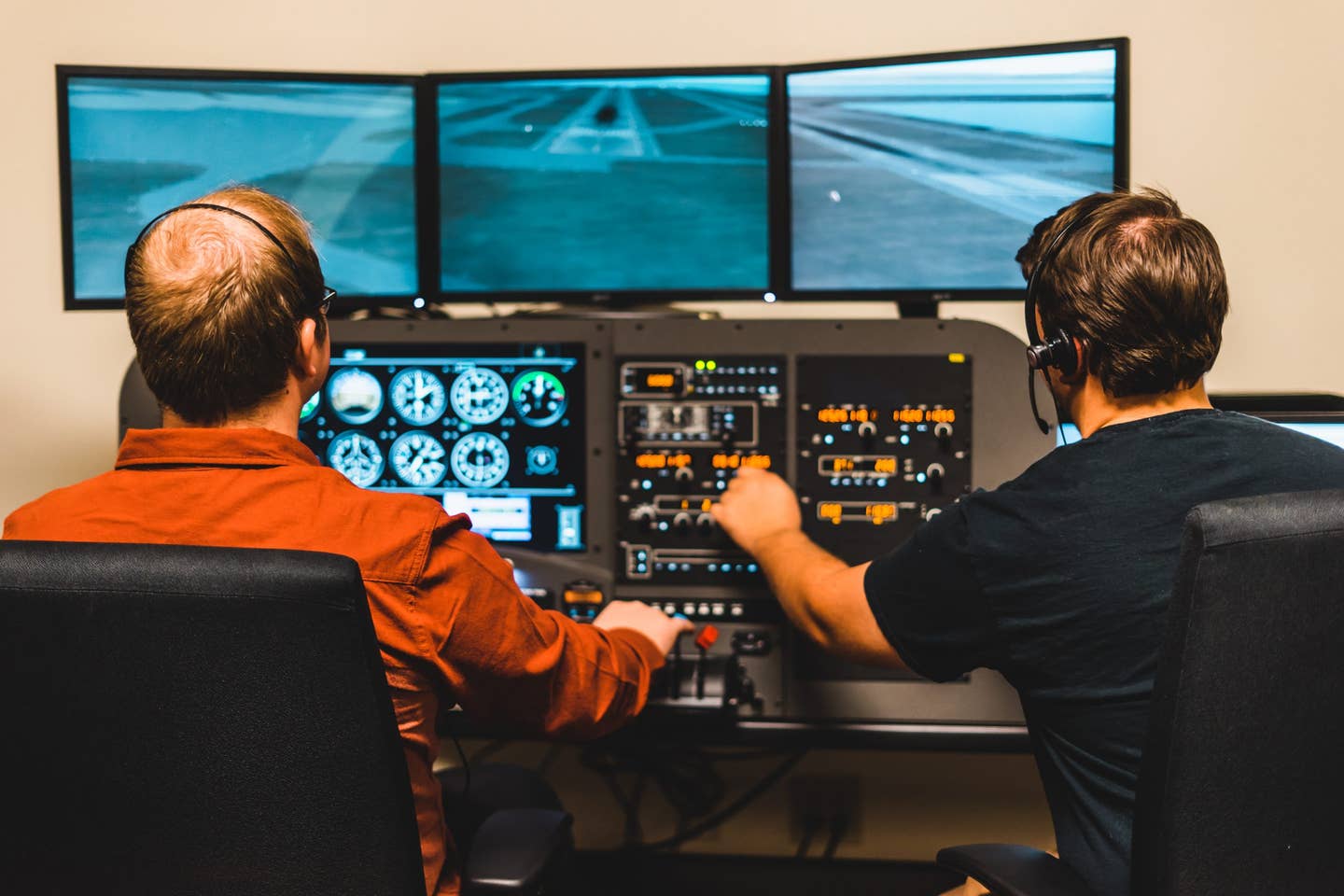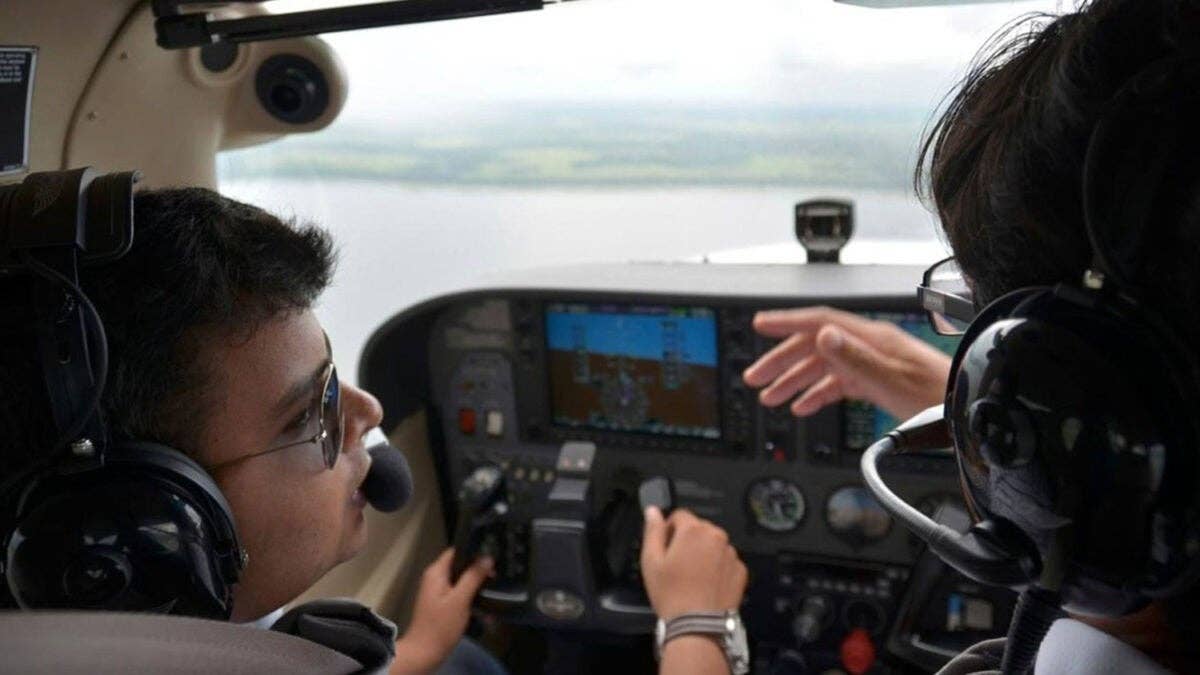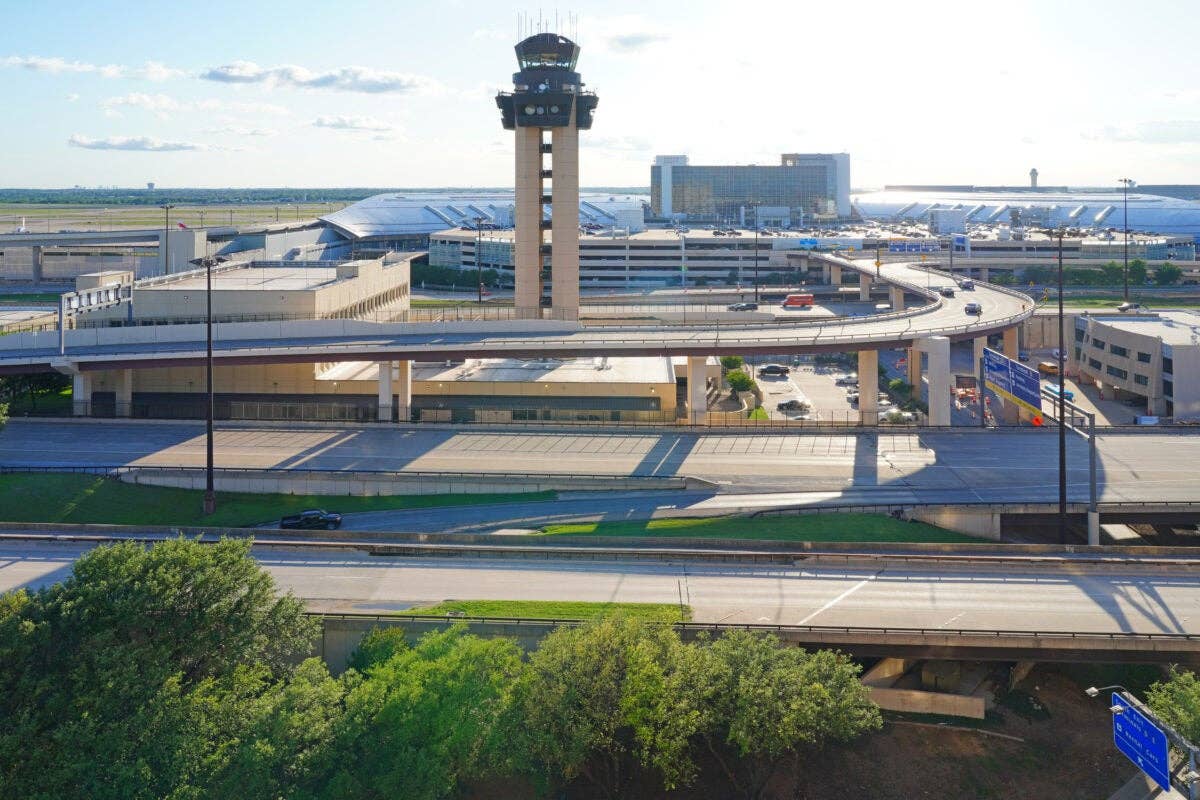Want to Save on Training? Make Better Use of Flight Simulation
CFI Michael Wildes says one of the best tools to train pilots often goes greatly underutilized.

Michael Wildes believes that flight simulators can be used more effectively in some circumstances. Credit: Adobe Stock
One Friday afternoon in 2018, around 8 p.m., news broke that a young man, Richard Russell, a Horizon Air Service agent, gained access to a parked Bombardier Q400 and—with no previous pilot experience—stole the airplane. After departing the Sea-Tac airport via Runway 16C with no clearance, a puzzling sequence of events followed.
Russell, acting alone and—as it became clear to authorities later—suffering from a mental breakdown, flew the otherwise two-pilot aircraft for nearly 75 minutes around the Seattle area. At one point, he completed a barrel roll, barely 10 feet above the water before ultimately choosing to crash the airplane on Ketron Island.
Naturally, investigators sought to uncover how Russell was able to fly so well. In fact, Horizon Air CEO Gary Beck called it “incredible.”
By his own admission during the event, Russell told the air traffic controller that he gained experience playing video games. Furthermore, some co-workers later speculated to authorities that Russell could’ve only known what to do by using some form of flight simulation software.
“I discovered that I could improve my students’ performances by exposing them to a range of real-time scenarios to develop their ability to correlate all the principles and ideas we’d discuss in ground sessions.”
Aside from the unfortunate outcome, this experience stuck with me. Indeed, at this time, I was working a night shift as a flight instructor, which meant spending a lot of time with students in a flight simulator for their instrument training. Even when I worked during the day and would perform private and commercial maneuvers with students in the simulator, I noticed we tended not to hold ourselves to a high enough standard, ready to claim “it’s just the sim” if a procedure didn’t look as clean as it should.
However, watching that harrowing situation and becoming more confident in my own flying, I realized my approach to training students in a simulator was limited, and I could up the ante. I discovered that I could improve my students’ performances by exposing them to a range of real-time scenarios to develop their ability to correlate all the principles and ideas we’d discuss in ground sessions. If I could get them to buy into “learning” how to handle new challenges instead of the typical pass/fail outcomes that training is designed around, all the better.
I now believe flight simulators and advanced aviation training devices (AATDs) have been the ultimate teaching tools for me as an instructor. It was where I was able to do my best work.
I started to wonder why instructors miss this high-leveraged, low-risk opportunity so much. For one, the incentives of the new airline transport pilot (ATP) minimums, which naturally offer preference to time in the airplane over the simulator, encourage instructors to say, “We’ll just fix it in the airplane.”
Sadly, instructors are leaving a lot on the table, both for themselves and students.
At the height of the first wave of aviation, Edwin Link— a serial entrepreneur and inventor from New York—figured something out. After taking delivery of his first Cessna, which he used for barnstorming, chartered flying, and teaching, he realized his ability to provide real-time flight instruction was limited. He decided to build a ground-based device, mounted on a pneumatic platform to simulate motion, and then hung a flight deck replica onto the moving platform so that pilots could learn in the first version of a flight training device.
Realizing that he’d finally stumbled upon a once-in-a-lifetime opportunity in a burgeoning industry, Link tried to sell his trainer. Except, no one wanted one—aside from amusement parks. Even the precursor to the U.S. Air Force—the U.S. Army Air Corps—turned him down.
Well, what changed?
“The Airmail Scandal” nearly grounded the entire industry. In 1934, USAAC pilots, flying newly assigned mail routes, kept running into bad weather and situations they never trained for on base, which unfortunately, led to high-profile accidents that killed 12 pilots in 78 days.
The loss of life caused public pressure to mount, and as the story goes, army officials finally recalled meeting Link, whom they summoned to New Jersey to demonstrate again his ‘Pilot Maker’ machine. Being the first to introduce instrument training a year earlier, Link had no trouble making it to Newark Field, in what was reported to be IMC, and essentially sealed the deal with the armed forces. In so doing, Link launched the entire flight simulator industry.
History is Important
Why the history lesson? Well, my civilian friends are very surprised each time I explain that the first time an airline or even corporate pilot usually flies a ticketed flight with passengers is usually their first time flying that airplane. Indeed, despite the hefty expenses large departments incur by acquiring a level D simulator that could run $8 to 20 million—and the subsequent expenses committed to initial and recurrent training—the straightforward takeaway is that simulators are arguably the most cost-effective tool for pilot training.
What do they know better that students and instructors in flight schools tend to miss? If those at the highest-level aim to eke out all the value from their training devices, so much so that you probably couldn’t tell if that was your pilot’s first airline landing or not, why is it at the lower level so many instructors and students leave so much on the table—to the detriment of their wallets?
‘But It Doesn’t Feel Like the Airplane’
You might be saying, “Well, those ATPs have full-motion simulators, so of course it’s easier.” Sure, entry-level simulators at even large flight schools aren’t the same. Most flight schools today have a range of training device options for their students, from the FAA Basic Aviation Training Devices (ATDs) and AATDs to Level 7, FAA Flight Training Devices (FTD), that derive their levels of sophistication based on design and aerodynamic principles, all of which are, well, grounded.
Meanwhile, the larger Full Flight Simulators (FFS) offer motion, a premium, nonetheless, even though at least one prominent study goes as far as to claim that a movable platform is not a necessary part of the total simulation experience, and, even suggests that the absence of a motion platform has no outcome in either training or testing.
While the latter claim makes for a rich debate, considering that entry-level pilots don’t have much of a choice, it would behoove them to make the most of what they have.
How to Maximize Simulators
Despite the limitations, I think there are large benefits that students and instructors can tap into to maximize their time in a simulator. All the examples above show they clearly offer more upside than downside.
Making the best of training devices requires a progressive approach and is reflective of core teaching principles and tactics, that are geared towards knowledge first, practice second, then automatic behavior ultimately. In a more direct sense, the way I suggest using the range of simulators, from AATD to FFS, is to work in the order of knowledge, procedure, then technique and finesse. I suspect this is why pilots working on their ATP are usually assigned ATP-CPT training first.
When you’re encoding new knowledge into your memory, it makes sense to go at your own pace, calling steps out loud, until they become automatic. The lowest levels of simulators allow pilots to do this, and require no motion, and more importantly, almost no money. Again, pilots leave a lot on the table.
After you learn all the flows, aim to fly various profiles, holding yourself to a high standard by doing as many “flows” as possible, so that at the very basic level, you could fly from point A to B in the simulator ensuring that the airplane is properly configured for each phase of flight without you feeling behind.
You can even tailor your approach for each flight course, pinning down flight procedures that are usually set for private and commercial training, and instrument flying techniques. In fact, it was in the simulator that I discovered my core teaching beat of known pitch and power settings that can be outlined for every single procedure you fly. I challenge instructors to spend some time figuring these things out and taking the time to share them with students to shorten the learning curve.
Don’t stop there. The ultimate thing I did for students was to introduce them to a range of malfunctions and abnormal situations for the airplane and weather and offered room for them to practice how to handle each event until it was “a day at the office.” This is the place to make all your mistakes and to uncover why you reacted the way you did. It’s important to resist the urge to rush to the airplane. I would also say to students the airplane is a bad place to learn. I figured I was onto something when—after we eventually got in the air—they’d say, “It’s just like we practiced in the sim.”

Sign-up for newsletters & special offers!
Get the latest FLYING stories & special offers delivered directly to your inbox






